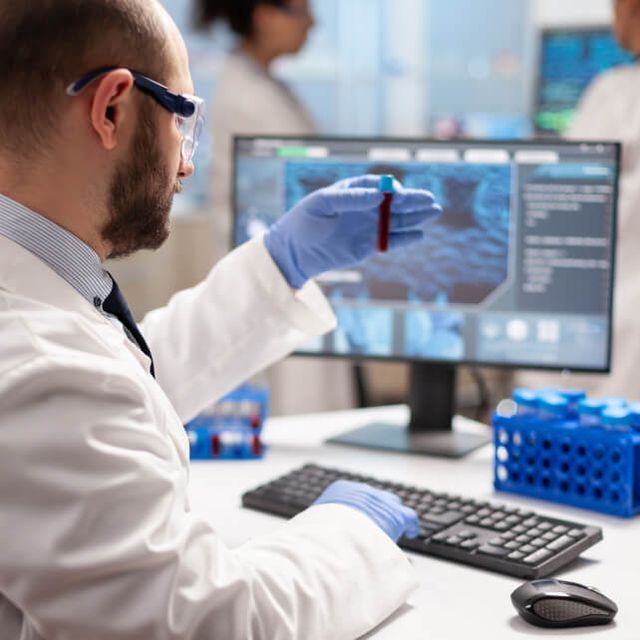What Causes Primary Immunodeficiency?
Primary immunodeficiency is caused by pathogenic (disease-causing) variants in genes that help develop the immune system and keep it working. These variants may make it easier for germs to enter the body, make it more difficult for the body to identify germs, or make it so the body cannot “remember” how to fight off germs it has encountered before.
With care for you

Gene List
Who Is This Test For?
This panel may be appropriate for anyone who has a personal or family history of frequent infections, fevers, or rash, particularly if infections do not completely clear up or keep coming back, require hospitalization or IV antibiotics, or are caused by an uncommon organism.
75% Remain undiagnosed

Benefits Of Genetic Testing
Accurate Diagnosis
Establish or confirm the appropriate diagnosis
Health Risk Awareness
Identify risks for additional health-related symptoms
Lifestyle Guidance
Assist in modifying lifestyle changes, including diet and exercise
Personalized Symptom Management
Result in more personalized symptom management
Family Risk Insights
Inform family members about their own risk factors
Access to Resources
Connect patients to relevant resources & support
Family Planning Options
Provide options for family planning
Test Specifications
This panel may be appropriate for anyone who has a personal or family history of frequent infections, fevers, or rash, particularly if infections do not completely clear up or keep coming back, require hospitalization or IV antibiotics, or are caused by an uncommon organism
Acceptable Sample Requirements
Buccal swab or saliva
Reporting
Likely pathogenic and pathogenic variants
Turnaround Time
2-3 weeks Coverage _>96% at 20x
Customization
Customizable gene list

What To Do When Genetic Testing Comes Back Positive
Doctors may confirm the diagnosis
Confirm the diagnosis
If a genetic mutation is identified, doctors may confirm the diagnosis through further testing or clinical evaluation to determine the extent of the disease or condition.
Test results will be sent to your personal email
Update the patient and family.
The doctor will inform the patient and family about the diagnosis and genetic test results, including the option for genetic counseling.
An individual treatment plan is developed based on the diagnosis
Develop a treatment plan
The doctor will develop a treatment plan tailored to the specific disorder and the patient's individual needs. This may include medications, therapies, and lifestyle changes.
The treatment plan may be adjusted if the body does not respond.
Monitor the patient
The doctor will monitor the patient's condition and adjust treatment as necessary. Refer the patient and family to a genetic counselor for risk discussion and family planning.
Get Connected
Let's get in touch. Drop us a message and we'll get back to you as soon as possible.
Business contacts